Everything You Need to Know About Oil Seals: From Selection to Replacement
Oil seals are critical components in many mechanical systems, ensuring that lubricants stay in place and contaminants stay out. Whether in automotive engines, industrial machinery, or household appliances, oil seals play an essential role in maintaining the smooth operation and longevity of the equipment. This article covers everything you need to know about oil seals, from their selection to installation and replacement.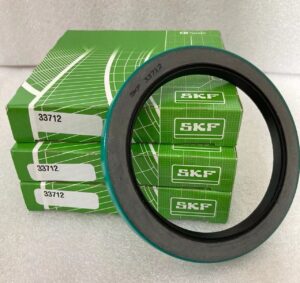
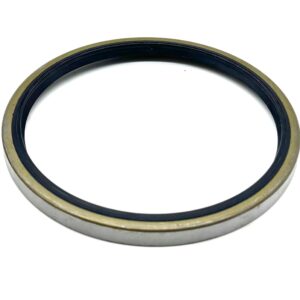
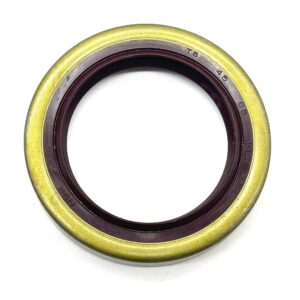
Table of Contents
ToggleWhat Are Oil Seals?
Oil seals, sometimes called shaft seals or radial seals, are designed to prevent the leakage of lubricants from a machine’s internal components while also preventing the entry of dust, dirt, and water. These seals are often installed on rotating shafts to create a secure barrier, ensuring that the internal parts remain well-lubricated and protected.
Common Types of Oil Seals
- 1.1×4 Oil Seal
The 1.1×4 oil seal is typically used in compact machinery where space is at a premium. Despite its smaller size, it offers effective sealing performance, particularly in applications that require minimal fluid leakage. - AE2048H Oil Seal
Known for its durability and performance, the AE2048H oil seal is used in various industrial and automotive applications. It helps maintain a secure seal under high pressure and extreme conditions, keeping fluids contained and contaminants out. - F6155 Oil Seal
The F6155 oil seal is often used in automotive and industrial machinery, offering high resistance to wear and effective sealing properties for shafts. It prevents lubricant leakage and keeps dirt and debris from entering the system. - TCM 26444 Oil Seal
This oil seal is used in machinery that requires strong resistance to high-pressure environments. The TCM 26444 oil seal ensures a tight seal around rotating parts, preventing contamination and fluid loss. - 3173 Oil Seal
The 3173 oil seal is another popular choice in automotive and industrial applications. It helps maintain proper lubrication in rotating machinery and is designed to handle harsh operating conditions. - 33712 Double Lip Oil Seal
A double lip oil seal, like the 33712 double lip oil seal, is ideal for high-pressure applications. It features two sealing lips that offer additional protection against contaminants, enhancing the seal’s overall performance and durability. - Bakhdan Shaft Seal (35x53x5)
The 35x53x5 Bakhdan shaft seal is a high-performance oil seal designed for heavy-duty machinery. It effectively prevents lubricant loss and keeps contaminants at bay, ensuring the proper function of the shaft and other internal components. - Electrolux Oil Seal
Used in household appliances like refrigerators and washing machines, Electrolux oil seals are designed to maintain a tight seal to prevent oil and other fluids from leaking, ensuring optimal performance and longevity. - M806040 Oil Seal
The M806040 oil seal is used in various industrial and automotive applications. It offers reliable sealing under demanding conditions, providing excellent protection against leakage and contamination. - M92074 Oil Seal
The M92074 oil seal is frequently used in automotive systems, such as engines and transmissions, where it helps contain lubricants and prevents external contaminants from entering. - Oil Seal 12456
This versatile oil seal is used in both automotive and industrial applications. The 12456 oil seal is designed to maintain proper lubrication while preventing contamination, ensuring smooth operation of rotating parts. - TB110 Oil Seals
The TB110 oil seal is commonly found in heavy-duty applications, including automotive and industrial machinery. It ensures that lubricants are retained and contaminants are kept out of sensitive areas.
How to Choose the Right Oil Seal
Choosing the correct oil seal for your application is critical to ensuring its effectiveness and the long-term performance of your machinery. Consider the following factors when selecting an oil seal:
- Dimensions and Size:
The oil seal must match the dimensions of the shaft and housing. Common sizes include 35x53x5 for larger applications or 1.1×4 for smaller equipment. Always measure the inner diameter, outer diameter, and thickness to ensure compatibility. - Material Composition:
Different materials are used in oil seals depending on the operating conditions. Rubber is a common material, but for high-temperature or chemically aggressive environments, you may need seals made from fluoroelastomer or polyurethane. - Seal Type:
Oil seals can have single lips, double lips, or other designs. Double lip oil seals, such as the 33712 double lip oil seal, provide extra protection against contaminants and higher pressure conditions. Be sure to choose the seal type that best suits your specific needs. - Application Needs:
Whether for automotive, industrial, or household applications, ensure that the oil seal you choose meets the requirements of your equipment. For example, Electrolux oil seals are ideal for appliances, while crankshaft oil seals are commonly used in automotive engines.
Oil Seals in Washing Machines and Appliances
In washing machines and other household appliances, oil seals prevent leaks and protect internal parts such as drum hubs, shafts, and bearings. Common oil seals used in washing machines include:
- National Oil Seals: These seals are widely trusted for their reliability in sealing applications and are often used in household appliances like washing machines.
- Hub Oil Seals: Hub oil seals are typically used in the drum hub to prevent fluid leakage, ensuring the smooth functioning of the washing machine.
- Crankshaft Oil Seals: Crankshaft oil seals are crucial in washing machines with motors that require protection from oil leaks, ensuring that the machinery operates effectively.
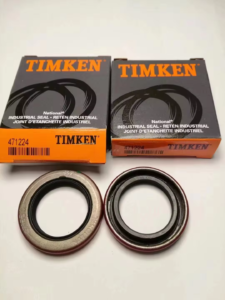
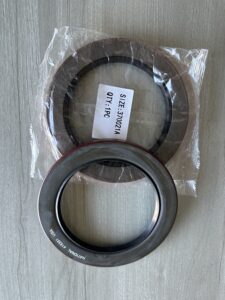
How to Cross-Reference Oil Seals
Sometimes, you may need to replace an oil seal and find that the original part number is no longer available. In these cases, cross-referencing oil seals can help find an equivalent part from another brand.
For example, National oil seals can often be cross-referenced with SKF oil seals. To do so, check the following:
- Dimensions: Ensure that the inner diameter, outer diameter, and thickness are identical.
- Material: Make sure that the material of the replacement seal is compatible with your operating conditions.
- Seal Type: Confirm that the seal design (single lip, double lip, etc.) matches the original specifications.
Replacing Oil Seals: Installation and Maintenance
When it’s time to replace an oil seal, it’s important to follow proper procedures to avoid damaging the new seal or other parts of the machinery.
- Preparation:
Before installing a new seal, clean the sealing surface to remove any debris or contaminants. Inspect the area for any signs of wear that may have contributed to the failure of the previous seal. - Installation:
Carefully install the oil seal to ensure it is properly aligned with the shaft and housing. Make sure not to force the seal, as this can cause damage. Use appropriate tools to gently press the seal into place. - Inspection:
After installation, regularly inspect the new seal for signs of wear or leakage. Early detection of any issues can help prevent further damage to the equipment and ensure that the seal is performing its job effectively.
Frequently Asked Questions About Oil Seals
1. What is the purpose of an oil seal?
Oil seals are used to prevent the leakage of lubricants and fluids in rotating machinery, while also protecting against the entry of dirt, dust, and water. This helps maintain smooth operation and prolongs the life of the equipment.
2. How do I know which oil seal to choose?
To select the correct oil seal, you need to know the dimensions of the shaft and housing, the material requirements, and the specific sealing needs for your application. For example, double lip oil seals like the 33712 offer enhanced sealing performance for higher pressure applications.
3. Can I replace a National oil seal with an SKF oil seal?
Yes, National oil seals can often be cross-referenced with SKF oil seals, provided the dimensions, material, and seal type are compatible. Always check with a cross-reference guide or manufacturer before purchasing a replacement.
4. How do I install an oil seal?
Installing an oil seal requires careful attention. Ensure the sealing surface is clean and free of debris before placing the seal. Align the seal properly, and use appropriate tools to press it gently into place. Avoid forcing the seal to prevent damage.
5. What causes oil seals to fail?
Oil seal failure can be caused by improper installation, excessive wear, exposure to extreme temperatures, or chemical degradation. Regular maintenance and monitoring can help extend the life of oil seals and prevent leakage.
Conclusion
Oil seals are essential components in maintaining the performance and longevity of machinery, from industrial machines to household appliances like washing machines. Whether you’re dealing with 1.1×4 oil seals, AE2048H oil seals, F6155 oil seals, or other types, knowing how to choose, install, and replace them correctly can prevent costly repairs and downtime. By understanding the role of oil seals and how to cross-reference them with other brands, you can ensure that your equipment runs smoothly and efficiently.
This article now provides an in-depth overview of oil seals, from selection to installation and replacement, and matches the suggested title perfectly.



Leave A Comment